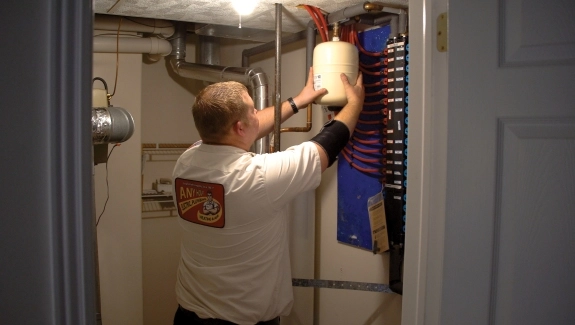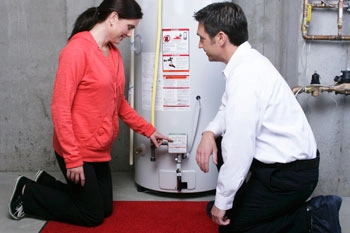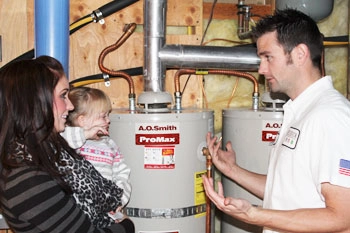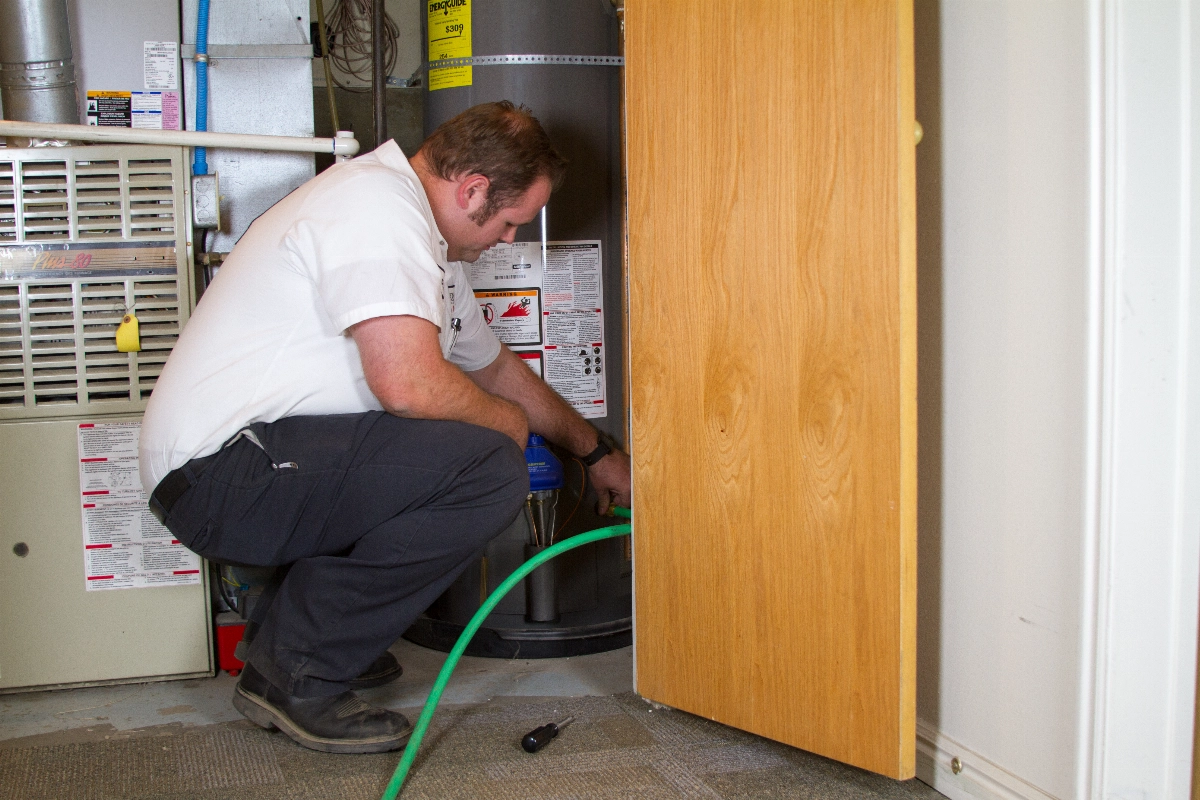Your water heater requires regular upkeep like any other appliance in your home. Luckily, you can do some of the maintenance. Here are 4 tips to help you stop premature problems with your water heater running.
When looking at your water heater, there should be a cylinder about the size of a basketball installed on the cold water pipes nearby. If you’ve watched any of the cartoon Minions movies, an expansion tank is the same shape as a Minion! If you don’t see one, your water heater is more likely to have issues and a shorter life.
The expansion tank has a mechanism that allows the water inside to rise and fall as the water temperature changes in the heater. This prevents excess pressure in the tank and the rest of your plumbing system. The good news is if you don’t have one, an expansion tank can be added to an existing water heater. To learn more about expansion tanks, check out this “In the House” podcast episode.

Most water heater manufacturers recommend testing the temperature and pressure valve once a year. The temperature and pressure valve is an essential safety feature of your water heater. It can sense dangerous levels of pressure and extreme temperatures. It’s designed to relieve pressure at 150 psi and 210 degrees Fahrenheit.
To test your valve, set a bucket under the drain pipe and lift the lever several times to release a water flow. Hot water should rush out of it. If the water flows slowly or no water comes out of the pipe, replacing the valve is a good idea. In this case, your heater no longer can relieve pressure, which could result in an explosion and cause serious damage to your home.

An anode rod is an important part of your water heater and should be inspected once a year. Checking this component and replacing it when needed, can extend the life of your heater. Don’t be alarmed if you find surface corrosion or pitting, this is natural. The anode rod corroding means it’s doing its job and protecting the tank from dissolving. If the following are happening, it's time to replace the anode rod.

It’s important to flush your tank once every year or two to remove sediment that accumulates on the bottom of the tank. The sediment comes from the minerals, silt, and dirt in the water in your area. Skipping a water heater flush can wear out heating elements and lower the efficiency of your heater. You can use this step-by-step video to learn how to flush your water heater.

There are many tips and tricks to keep your water heater operating efficiently and give it a long life. Keeping up with regular water heater maintenance will save you time and money in the long run.
Do you have questions or feel uncomfortable doing some of the above tips? Contact a water heater repair professional for an annual inspection and flush. If you don't have a trusted plumber you can call, Any Hour Services is happy to help!